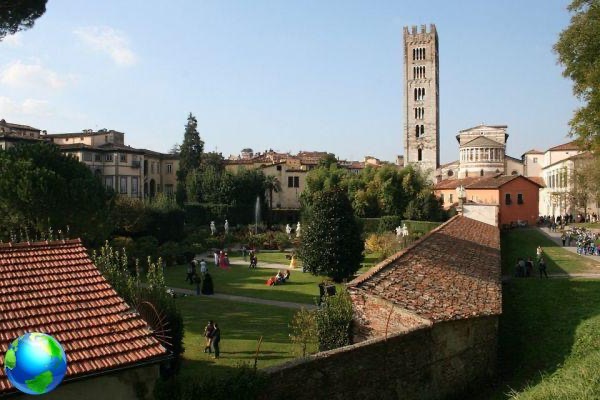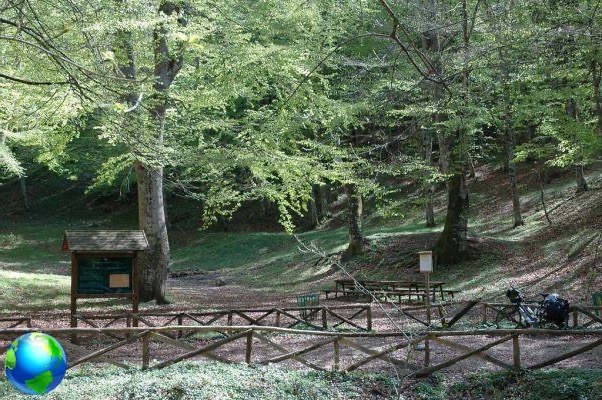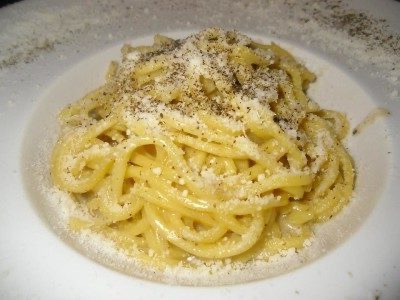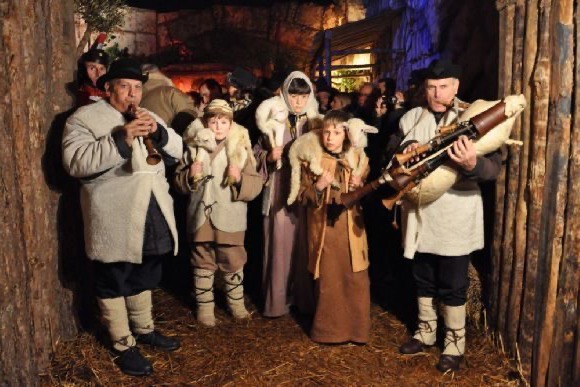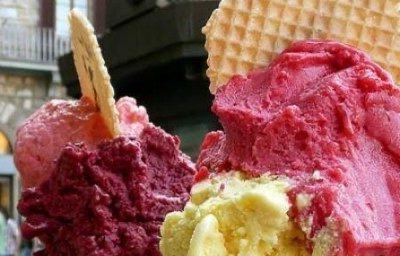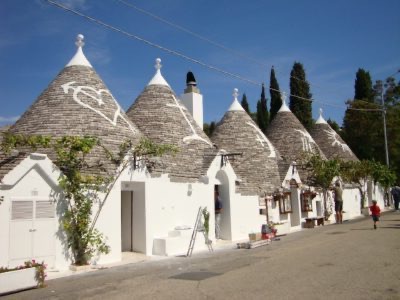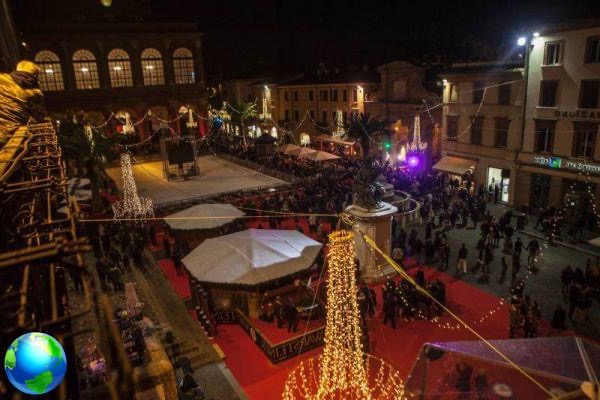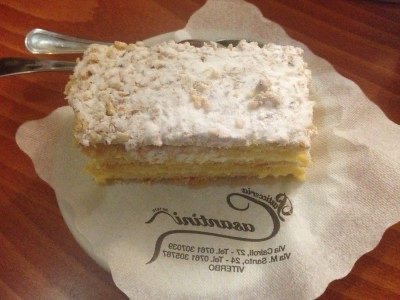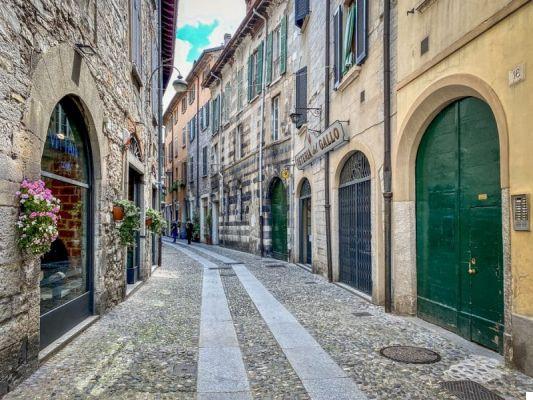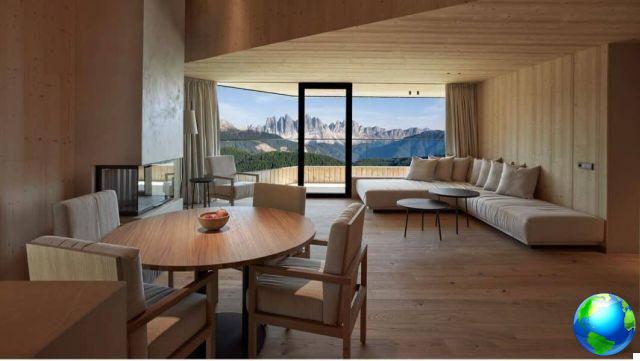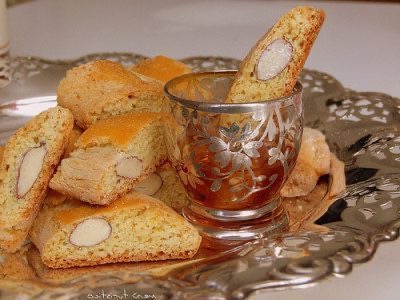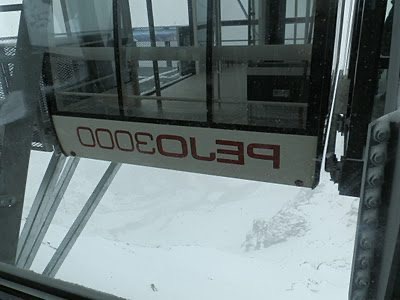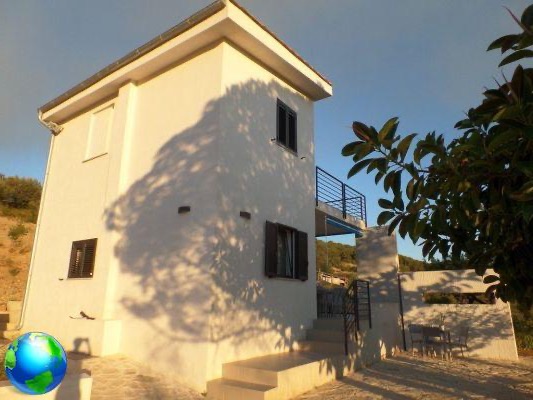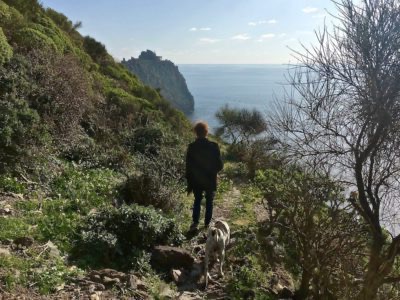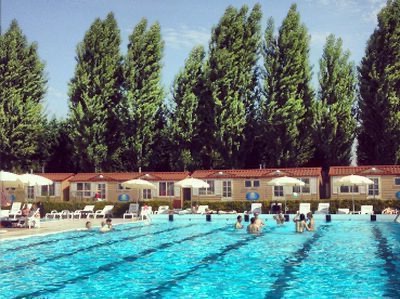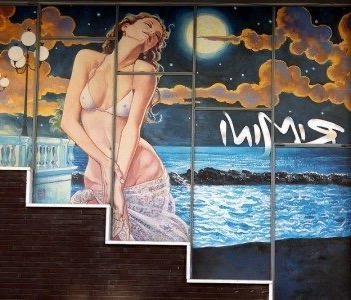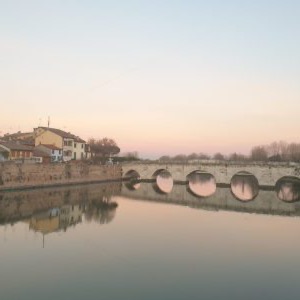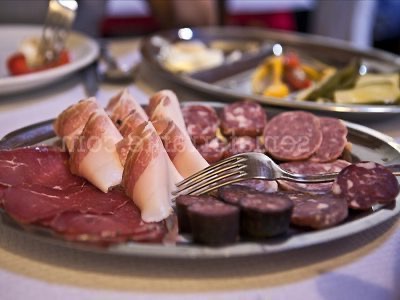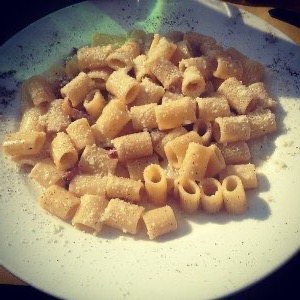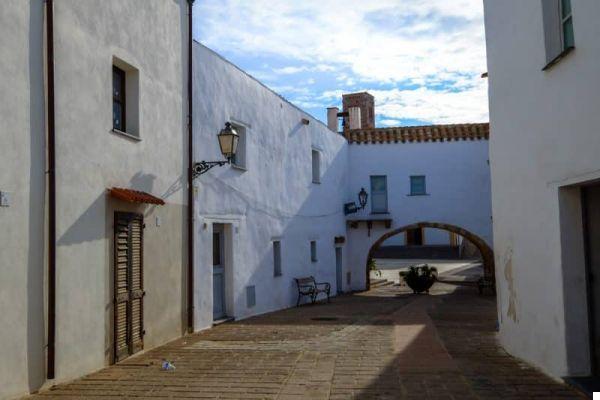Charming villages, architectural works that will amaze you and many legends to discover: in Garfagnana you will not be bored and taste will also play its part. Ready to book your weekend?
Last November I spent a beautiful weekend in Garfagnana, between hills and history.
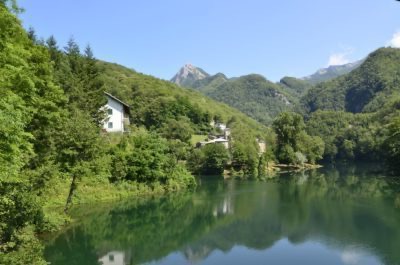
Here's what to see if you have two days to spend in this area: between Garfagnana and Lucca.
The suggestive village of Barga
I recommend starting from the small and charming village of Barga.
Barga is a small village (it is starting to sound like a play on words, but it is not), of just under 10.000 inhabitants, located in the province of Lucca, nestled in the hills and woods of the Garfagnana. It is located in the Media Valle del Serchio, 410 meters above sea level, and has been recognized among the most beautiful villages in Italy.
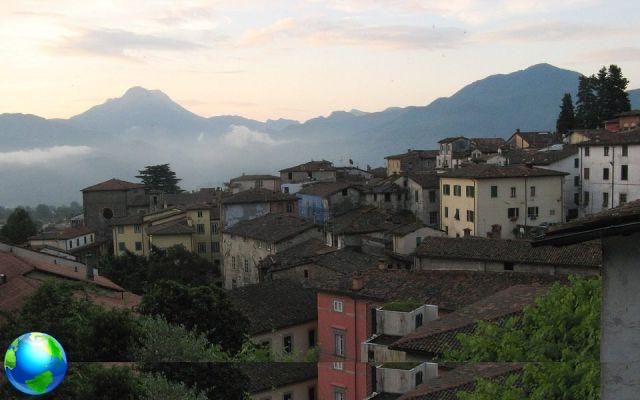
This city has a long and ancient history and its most important religious building, the Church of St. Christopher, it even boasts its primitive construction prior to the year 1000. The church then underwent several reconstructions and modifications, which today lead it to have a style that ranges between Romanesque and Gothic.
From the courtyard and terrace in front of the church, you will have before your eyes a beautiful panorama.
In front of you you will then find a sign bearing a sort of legend for which once a year, on a specific day of the year, from that terrace it is possible to see two suns.
It was the bell tower of this church that inspired Giovanni Pascoli's poem "L'ora di Barga".
But in Barga it will be the small alleys and the perched houses that will impress you, together with the beautiful remains of the Roman aqueduct, right above the river.
Where to eat in Barga
If you want to stop here to eat something, I recommend the Scacciaguai restaurant and alternatively the L'Altana restaurant, both in the heart of the tiny hamlet.
The Devil's Bridge: pearl of the Garfagnana
After this first dive in the Garfagnana, you can now take the road towards Lucca, but a beautiful and suggestive detour awaits you.
If you pass through the Garfagnana you must absolutely stop at Ponte della Maddalena, better known as Devil's Bridge, which crosses the Serchio river near Borgo a Mozzano. The reasons that make this bridge beautiful are its incredible shape and the legends that surround it.
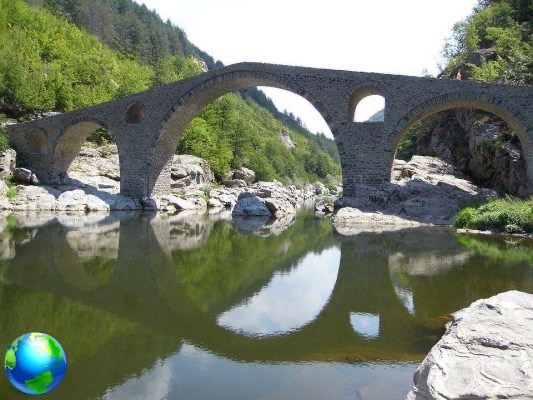
It is an engineering pearl, particularly due to the shape of its tallest arch, so much so that it seems impossible to believe that man was able to conceive and build a bridge of this shape, which still stands perfectly upright today. Precisely for this reason it has long been renamed the "Devil's Bridge".
The best known legend of the Garfagnana
In fact, local legend attributes its construction to the Devil himself, however the same story tells that he was later cheated and mocked by the builders who had asked for his help.
In fact the legend says that the ancient builder, worried about the delay in the construction of the bridge, invoked the Devil in despair.
He then proposed to the builder to finish the bridge himself in exchange for the first soul who had crossed his work. Once this incredible engineering work was finished, the builder, with the help of the local priest, devised a ploy to mock the real builder and made the first to cross the bridge to be a white dog.
Following this gesture, according to legend, the Devil disappeared in anger by throwing himself into the river.
Even today it is said that, during some autumn evenings, the famous white dog is seen walking on the bridge, and that it is possible, looking down from the bridge, to see the petrified figure of the same dog in the waters of the river.
The bridge is beautiful and you can't resist walking it looking in the river for the silhouette of a dog.
Eat near the Ponte della Maddalena
At this point you will be hungry but the perfect place will be right next to you because, at the foot of the bridge, there is a small and picturesque Osteria del Diavolo. It is one of those taverns that still remain as it once was, the atmosphere is spartan, the host is kind and the dishes are few but delicious and super local.
I suggest you order a nice glass of red wine, take a platter of local cold cuts and cheeses, add an onion soup (spectacular) or a ribollita and top it all off with a homemade dessert. Honest prices and food that has that ancient flavor that only in Garfagnana can have.
Lucca: famous and fascinating city of art
Now it is time to move towards Lucca, where you will spend your entire second day.
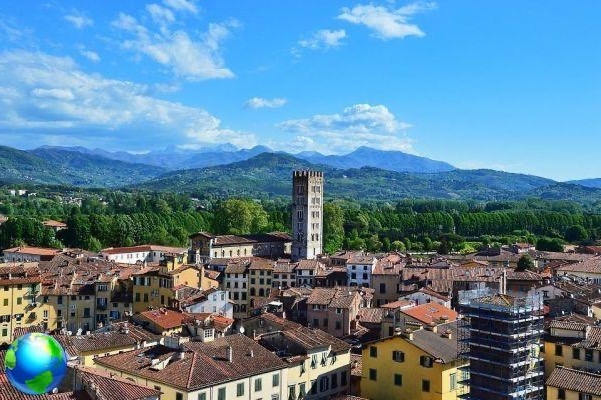
Lucca is one of the most famous and fascinating cities of art in the Tuscany region. Its ancient center is smaller than you can imagine and the sixteenth-century walls that surround it are still high and imposing. Lucca is known for its monuments and for its particular historical center and capable of enclosing buildings from various eras.
Once you arrive you will need the evening and the whole day to follow to visit this ancient city. But first make a stop and a pleasant aperitif in the center.
Go to Piazza San Michele a The Tana del Executioner, a small place with few seats, the counter is the best position, where you can drink a good glass of wine combined with gourmet sandwiches made on the spot with typical local products.
In Lucca it is worth getting lost in the alleys and wandering far, wide and in circles. However, you cannot miss some things, which are practically symbols of Lucca.
The Guinigi Tower, symbol of Lucca
From the Guinigi Tower, the most important of the city, as well as one of the few that remain almost intact. This tower has a unique feature that is the presence of some trees on the top of it, a sort of mini garden overlooking the whole of Lucca.
The Guinigi family, mistress of the city, at that time, wanted to create this tree-lined tower today the symbol of Lucca.
Climb to the top of the tower and you can admire the beauty of the city and the surrounding valleys and mountains even better.
The Tower of the Hours in Lucca
Another famous tower in Lucca is the Tower of the Hours, installed in 1754 by local watchmakers, it still works with manual winding today and has a beautiful visible mechanism. Keep in mind that, in medieval times, Lucca had over 250 towers and many bell towers.
If you are a wine lover, but also if you are just curious, visit theVanni wine shop in Piazza San Salvatore. From outside a glass door will make you perceive a small and narrow space, once you enter and descend a small ladder, a huge cellar with very precious wines will open in front of you.
Piazza dell'Anfiteatro is another historical place in Lucca and was built on the remains of an ancient Roman amphitheater, which is why it now has this particular elliptical shape. The square is accessed through four vaulted doors.
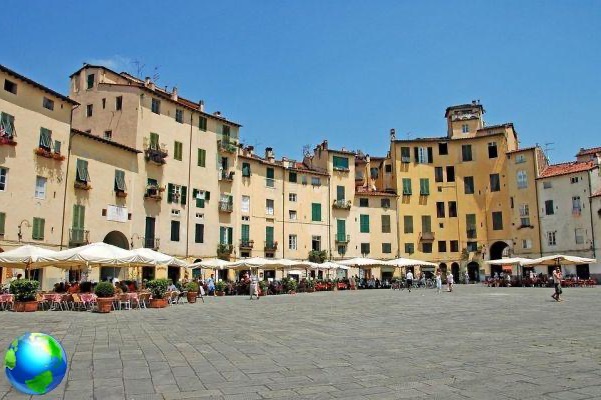
Then visit the Lucca Cathedral, dedicated to San Martino, whose peculiarity is the asymmetry of its right side, due to the need to adapt the facade to the bell tower that already existed at the time, and the Churches of San Michele and San Frediano.
These churches, second in importance only to the Duomo, strike the first for its very high facade from which stands St. Michael the Archangel in the act of killing the Dragon, the second for the shining mosaic on the facade. It is no coincidence that Lucca is also called the city of 100 churches.
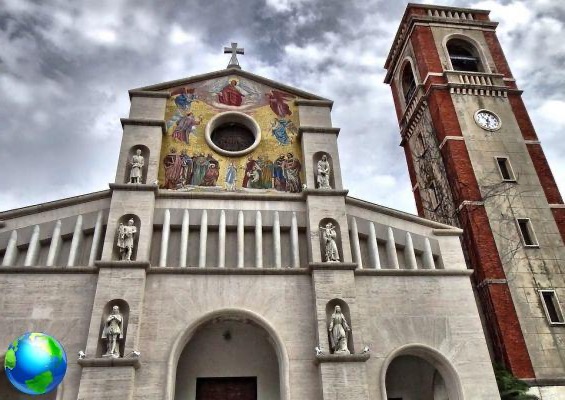
Gastronomic tips in Lucca
In the meantime you will be hungry and I recommend the Olive tree restaurant in Piazza San Quirico, excellent for tasting the typical dishes of Lucca.
The imposing walls of Lucca
Finally, take a nice walk on the imposing walls or in the surrounding parks, you will find other curious and very interesting views.
The walls of Lucca are 12 meters high for a length of 4 km and a width of over 30 meters.
Among other things, on the edge of the Walls of Lucca (accessed from via degli Asili 33), you will see an enchanting and fairytale palace called Pfanner Palace, a private residence in an almost baroque style, dating back to the 1660th century, famous for its beautiful garden and the frescoes in the halls inside. It is a palace built by the ancient and wealthy Moriconi family in 1856 and since XNUMX the residence of the Pfanner family.
